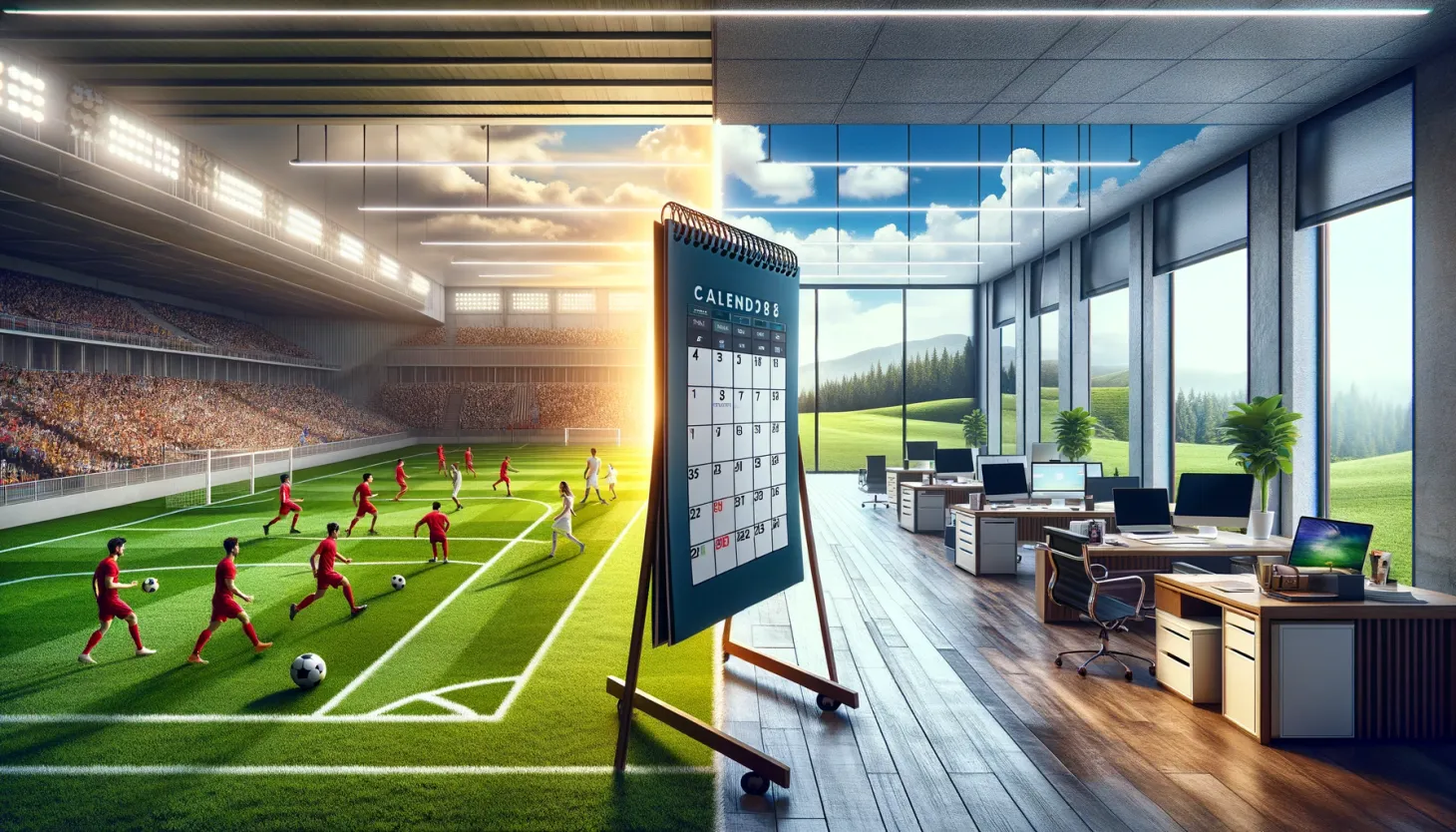IG#27: Not being present is killing your brain, the Flowtime Technique, & more
People spend up to 50% of their time thinking about the past or future. That cannot possibly be healthy. Here's why.

Welcome to the first edition of 2024, & a happy new year!
Today, we’ll take a look at the effects of spending a lot of time thinking about the past or future, a new time management technique, and a few podcast recommendations about productivity, business, and love.
Let’s dive in.
[1] How living in the past or future is increasing your cognitive load
In systemic coaching school, they teach that people spend up to 50% of their time thinking about the past or the future - and not being present in the moment.
I believe that number is even higher.
How often do you half-ass stuff because you’re mentally already at the next step?
I certainly do: thinking about the things I need to do tonight when really, I should be focused on the important meeting I’m currently attending.
When you’re thinking about the past or future, you’re not present in the moment. You are trying to do two things at the same time.
This is another form of multi-tasking. Which we know is bad for you:
It kills your ability to focus1
It makes your memory worse
It diminishes your productivity
It reduces your cognitive performance2
Now, by not being mentally present in the present, we force our brains to multi-task:
- Do the thing that’s currently being done
- Think about past or future
If we now assume that 50% of our time is spent thinking about the past or future, we spend 50% of our time with 2X the cognitive load.
So just by not being present and focused, we increase our daily cognitive load by 1.5X.
That doesn’t seem healthy. Let’s do something about it.
Here are a few things that seem to work (according to science):
[1a] Meditation
You knew this was coming. It’s a cliché because it actually seems to work. A 2016 study showed that a mindfulness intervention had positive effects for all participants, but especially for the ones who were heavy multitaskers.
From my personal experience, meditation feels fantastic and has helped me focus better and be more present.
How to build the habit:
- I use Headspace, but I also hear good things about Calm. Download and sign up for one of those apps.
- Start by meditating 5 minutes daily. After waking up or before going to bed seem to be good times.
- Once you’ve built that habit, slowly try to work your way up, all the way to 30 minutes.
Meditation is a skill. Once you’ve acquired it, it’s obviously okay to do it less - but you’ll lose it again if you don’t use it.
[1b] Yoga
You also knew this was coming. Yoga is moving meditation, and I find it even easier to be fully present when doing Yoga compared to meditation.
Added benefit: you learn how to move better, and already get a small workout in (I wouldn’t go so far and say that Yoga can replace an actual conditioning or weightlifting workout, but it’s a solid supplement).
How to build the habit:
- Make it as frictionless as possible. Don’t go to a studio yet, just use an app (I like Down Dog).
- Find a trigger in your day. I usually do Yoga before I meditate to get me in the right state of mind. Morning, evening, lunch break - all works. Just make sure you have the right trigger.
- Start small (7 minutes is good), then slowly work your way up, again all the way to 30 minutes.
Again, anything is better than nothing at all. For the initial “skill acquisition period”, it’s better to work up to a certain level before dialing it back down.
[1c] Eliminating Opportunities to Multitask
Focus follows environmental design. A cluttered environment = a cluttered mind. If you have a ton of stuff lying around, a ton of tabs open, and distractions come in from everywhere, it’ll be extra hard to be fully present.
How to build the environment:
- Clean up your desk. Get a drawer if necessary.
- Build systems for not forgetting anything that don’t live on your desk. (I like to have invoices to be paid on my desk as reminder to pay them, but that just adds to the clutter.)
- Create one folder on your desktop. Move everything on your desktop into that folder.
- Clean up your dock. Only put the absolutely necessary apps in there.
- Close all open tabs every evening. That makes a huge difference.
- Put your phone into airplane mode (and if you can work offline, your laptop too). It’s the best productivity app out there.
- If you can’t do that, turn off all notifications and try to keep communications tools closed.
With these adjustments, you might still get distracted, but much less so. And hence be fully present.
Bonus: I recently learned about the Minimalism Game. It goes for 30 days. On day 1, you throw out 1 thing. On day 2, 2 things. And so on, all the way up to 30. If you make it to the end, you’ll have gotten rid of 465 things in your household. That’s a lot. This could help with less clutter.
Let’s start 2024 by learning how to be present in the moment.
Your cognitive load will thank you.
[2] The Flowtime Technique
I used to be a huge fan of the Pomodoro Technique (work for 25mins, rest for 5, repeat).
But now that I’m writing daily - an activity that requires a flow state - I’m finding it less and less useful.
Often, it takes me 10-15 minutes to get into a flow state.
I don’t want a timer yanking me out of that state. The 5 minute break does nothing for me at that time. It’d be much better if I just kept working.
So I do.
I keep working, until either the task is done or I feel that I need a break.
Recently, I learned there’s a term for this: The Flowtime Technique.
The rules are simple:
Start working on a task.
Start a timer.
Once you get tired or distracted, take a break. Based on how long you’ve worked, you can use the following break times as a guideline:
For 25 minutes of work or less, take a five-minute break.
For 25–50 minutes of work, take an eight-minute break.
For 50–90 minutes of work, take a 10-minute break.
For more than 90 minutes of work, take a 15-minute break
With this technique, you won’t be interrupted anymore by your stupid Pomodoro timer.
Tracking the time allows you to get a good sense of how long it takes you to get stuff done, which does two things:
- You can project better how long it’ll take you to do future, similar tasks (relevant if you’re using a task management system like Motion, where you have to estimate the time a task will take).
- You visualize how much output you generate when working in a focused state (it’s insane).
Try it.
And if it’s not for you, the Pomodoro timer will still be there.
PS: I still like the Pomodoro Technique for tasks where I just have to grind it out.
The 25 minutes hold me accountable. It’s a time span where you can willpower your way to completion if an end is in sight.
[3] A few podcast episodes I enjoyed recently
The new year is a great opportunity to do more sports. To make it a bit more bearable, I enjoy listening to podcasts while doing them. Here are a few episodes I’ve really enjoyed recently:
- Chris Williamson & Ali Abdaal on traits of the super-productive. “I always thought I need I will get stuff done once I have the perfect Notion template; now, I realize that what matters most is working on the right things.”
- Acquired: Visa. A deep dive into the history of Visa as a company and what they actually do. (Hint: it’s not issuing credit cards). Crazy story, even crazier business model, and one of the most profitable companies of all time.
- DOAC with Alain de Botton on loneliness and depression. “All mental unwellness stems from a deficit of love.” If you only listen to one episode, I encourage you to make it this one.
That’s it for this week. Like, share, comment, subscribe, you know the drill.
Most importantly, though:
- Make the most of your day today.
- Get out there.
- Do cool shit.
- Love life.
Let’s unlock our potential together. 🤝
Dominik Nitsch
One ask from my side
I’ve been getting a lot of feedback that some of you really enjoy what I’m writing - which makes me feel giddy, warm, and fuzzy. Please keep that coming.
My friend Lea mentioned recently: “a few friends and myself love the newsletter - we don’t always agree with what you write, but it encourages discussions among us, and that’s awesome”.
I love hearing that. If everybody agreed all the time on the things that I write, this stuff would be boring as hell.
So if you feel anything like Lea, please tell a friend about this newsletter, and maybe even forward them this email. It’s the best thing you can do to help this newsletter grow.
The more people subscribe, the more time I’m forced to spend on writing the best possible newsletter. Again, everybody wins.
Click the button below. 👇
That’s it for this edition of International Generalist. Thanks for tuning in and reading!
Who’s behind International Generalist?
I’m Dominik, and every day, I try to figure out how to become a tiny bit more effective. Then, I share some of the lessons learned here.
When I’m not writing, I build the international business for Sdui - the Leading European SchoolOS -, play Lacrosse, lift weights and enjoy draft beers.
Here’s how else I can help you:
- Read the newsletter archive for more actionable nuggets
- Download your free copy of The Ultimate Guide to Time Management (how to reclaim 4 hours of your day)
- Connect on LinkedIn or Twitter for daily doses of insights
- Send me a question that you’re thinking about! I’m always looking for content that is relevant to YOU.
Dominik Nitsch Newsletter
Join the newsletter to receive the latest updates in your inbox.


